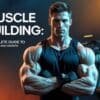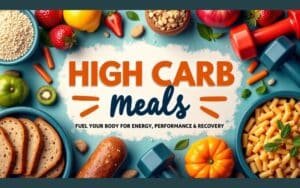Lower Body Strength: Best Home Exercises & Tips
Introduction
Strong legs and a stable lower body are essential for overall fitness, mobility, and injury prevention. The lower body muscles—quadriceps, hamstrings, glutes, and calves—play a crucial role in daily movements like walking, running, and lifting.
A well-structured home workout can help build strength, improve endurance, and enhance athletic performance without needing expensive gym equipment. Whether your goal is to tone your legs, build power, or simply move better, incorporating the right exercises can make all the difference.
Fundamentals of Muscle Growth and Strength Building
Strength training is about more than just moving your body—it’s about progressive overload and muscle activation. The key principles of lower body strength training include:
- Progressive Overload: Gradually increasing resistance (through body weight, resistance bands, or household weights) to challenge muscles.
- Proper Form: Ensuring correct movement patterns to prevent injuries and maximize muscle engagement.
- Time Under Tension: Slowing down movements to increase muscle activation and endurance.
- Recovery: Muscles grow during rest, so giving them time to rebuild is crucial.
With these fundamentals in mind, let’s explore the best exercises to develop lower body strength at home.
Best Lower Body Exercises for Strength and Stability
1. Squats
Squats are the foundation of lower body strength. They engage the quadriceps, hamstrings, and glutes while improving balance and stability.
- How to Do It: Stand with feet shoulder-width apart, lower your hips until thighs are parallel to the floor, then drive back up.
- Reps & Sets: 3 sets of 12-15 reps.
2. Bulgarian Split Squats
A challenging unilateral exercise that targets the quads, glutes, and hamstrings. It also improves balance and coordination.
- How to Do It: Place one foot on a chair or elevated surface behind you, lower into a lunge, and push back up.
- Reps & Sets: 3 sets of 10-12 reps per leg.
3. Glute Bridges
This movement isolates the glutes and strengthens the posterior chain, which is essential for lower back health and athletic performance.
- How to Do It: Lie on your back, bend your knees, and lift your hips towards the ceiling while squeezing your glutes.
- Reps & Sets: 3 sets of 15 reps.
4. Step-Ups
Step-ups build leg strength while improving stability and unilateral coordination.
- How to Do It: Step onto a sturdy chair or bench, drive through your heel, and bring the other leg up.
- Reps & Sets: 3 sets of 10 reps per leg.
5. Calf Raises
Often neglected, strong calves improve ankle stability and reduce the risk of injuries.
- How to Do It: Stand on your toes, hold for a second, then lower slowly.
- Reps & Sets: 3 sets of 20 reps.
These exercises form the foundation of a strong lower body, ensuring balanced muscle development and functional strength.
Structuring an Effective Home Workout Routine
To maximize strength gains, it’s important to structure workouts effectively. Here’s a sample weekly routine:
- Day 1: Strength Focus (Squats, Bulgarian Split Squats, Step-Ups)
- Day 2: Mobility & Recovery (Stretching, Yoga, Foam Rolling)
- Day 3: Endurance & Burnout (Glute Bridges, Jump Squats, Calf Raises)
- Day 4: Active Rest (Walking, Cycling, Light Mobility Work)
- Day 5: Strength & Stability (Lunges, Single-Leg Exercises, Core Work)
- Day 6: Full Body Training (Incorporating Lower and Upper Body)
- Day 7: Rest & Recovery
This routine ensures muscle activation, recovery, and progression without overtraining.
The Role of Nutrition in Building Stronger Legs and Glutes
Strength training is only half the equation—nutrition fuels muscle growth and recovery. Essential nutritional components include:
- Protein: Supports muscle repair and growth. Sources: Chicken, eggs, lentils, fish, and protein shakes.
- Carbohydrates: Provide energy for workouts. Sources: Quinoa, oats, brown rice, and sweet potatoes.
- Healthy Fats: Aid in hormone production and recovery. Sources: Avocados, nuts, and olive oil.
- Hydration: Muscles need water for optimal function and recovery. Aim for 2-3 liters per day.
Supplements: Enhancing Recovery and Performance
Supplements can support muscle recovery, reduce fatigue, and enhance performance. While whole foods should be the priority, these supplements can be beneficial:
1. Whey or Plant-Based Protein
A quick source of essential amino acids, perfect for post-workout recovery.
2. Creatine Monohydrate
Enhances strength, endurance, and muscle volume by improving ATP production.
3. BCAAs (Branched-Chain Amino Acids)
May reduce muscle fatigue and accelerate recovery between workouts.
4. Omega-3 Fatty Acids
Support joint health and reduce inflammation, aiding in long-term strength training.
5. Magnesium & Electrolytes
Help prevent muscle cramps and optimize muscle function.
When combined with proper nutrition and training, supplements can aid in faster recovery and improved performance.
Common Mistakes to Avoid When Training Lower Body
Avoiding common mistakes ensures better results and reduces injury risks. Some key pitfalls include:
- Skipping Warm-Ups: Cold muscles are prone to injury. Always start with dynamic stretches.
- Neglecting Recovery: Overtraining without adequate rest can lead to muscle fatigue and injury.
- Using Poor Form: Incorrect technique can strain joints and reduce effectiveness.
- Not Progressing: Sticking to the same routine without adding intensity leads to stagnation.
Consistency Leads to Strength and Stability
Building lower body strength at home requires commitment, discipline, and proper technique. By incorporating effective exercises, structuring workouts, eating a well-balanced diet, and supplementing wisely, you can develop a powerful and resilient lower body.
Progress won’t happen overnight, but with consistent effort, the results will speak for themselves. Start today, challenge yourself, and enjoy the journey toward stronger legs and better mobility.









Add comment
You must be logged in to post a comment.